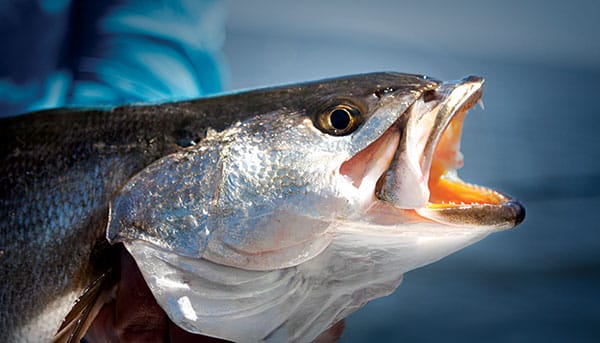
The current flowed steadily along the reef as the boat swung into a perfect parallel position 30 yards off the exposed chunks of concrete. Beyond the tip, a distinct color change had formed as the latte-colored bay water pushed against the incoming green Gulf of Mexico. Bobby Carter readied his tackle, while I watched curiously.
“This is it, my secret weapon,” he told me with a grin as he slid the red-and-white plastic bream bobber onto the monofilament line. “I don’t use any leader, and tie on one of these Kahle hooks with an improved clinch knot, and I’m set. It really works, I promise,” he added, in reaction to the dubious look on my face.
Sure enough, as soon as Carter dropped the unconventional rig just shy of the rubble, the live shrimp started jumping frantically. Suddenly both bait and bobber disappeared, and Carter delicately pumped the spinning rod before a hefty seatrout came thrashing alongside. The fat fish, called “specks” locally, measured just shy of 20 inches.
“Now do you believe me?” Carter asked. I still wasn’t convinced. That is until he boxed three more trout before my first strike, with the heavy Styrofoam float on my line.
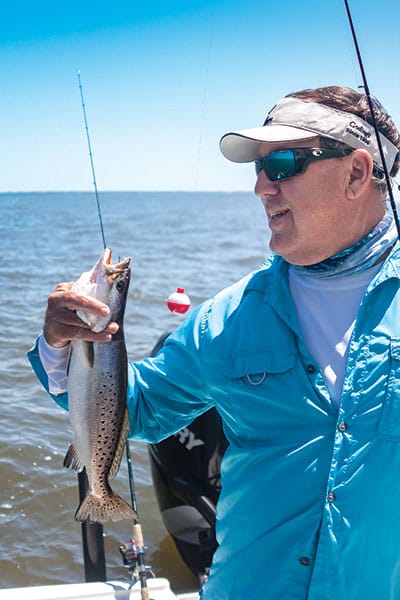
Fishing Live Shrimp With A Bobber
“I know it’s kinda goofy, but these plastic floats are the key. First, they’re smaller so the fish don’t see them as well, and two, they’re light enough that the shrimp stay frisky as the current sweeps them along,” he says. “When I’m using croakers, they’ll pull ’em down, and they’ll pop back up. The croakers struggle, forget to pay attention, and get slammed. The same setup also works on redfish and flounder.” Carter forgoes a leader so if he gets hung up in the structure, he can break the 12-pound mono without sacrificing terminal tackle.
The Katrina Key Reef we fished is one of dozens of inshore and nearshore artificial reefs on the narrow Mississippi Gulf Coast. An easy run from either Biloxi or Ocean Springs, the rubble and debris from hurricanes serves as a storm-surge barrier for nearby Deer Island.
“These reefs protect against storm surge, but they’re also ideal habitat. I fish several, as well as the barrier islands, depending on the season, but Katrina is my favorite,” Carter explained.
Carter grew up in nearby Ocean Springs and has a reputation for consistently catching quality trout. His biggest to date: an 8.6-pounder taken on a small live shrimp, and a 7.2-pound speck on a live croaker. Both fell for the bream-bobber technique.
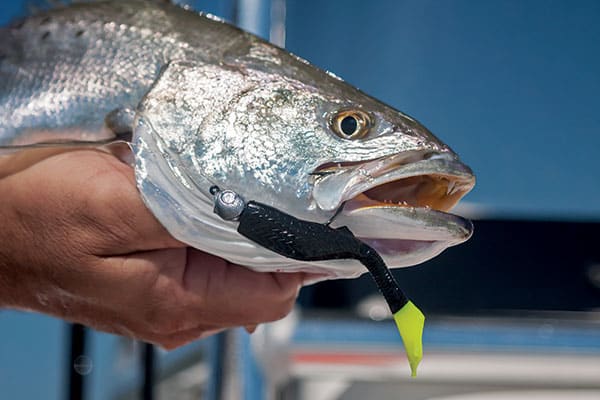
Fishing Live Bait for Seatrout
When there’s a sea breeze, Carter anchors outside the reef so his boat swings into casting position to drop baits within 10 feet of the rubble. Tide and moon phase matter little, provided there’s current flowing along the 10-foot depths. Carter prefers a tight drag initially to pressure the fish away from snags, then he loosens it to avoid pulling the hook out of the trout’s soft mouth. Eighteen inches (2 pounds) is the average catch size, but fish up to 24 inches are common. Redfish pushing 30 inches, as well as sheepshead, flounder and black drum are not unusual either.
“In late spring and fall, the trout like the shrimp best,” Carter says. “During summer, I switch to croakers.” Carter also uses the shrimp in another unorthodox technique: When the lee side of the reef is clear of other boats, he’ll rig a live shrimp without a float and slow-troll down the reef using his trolling motor on a slow setting. The shrimp trails 25 yards off the transom and just off the rocks. The seatrout rocket up and typically set the hook themselves on the strike.
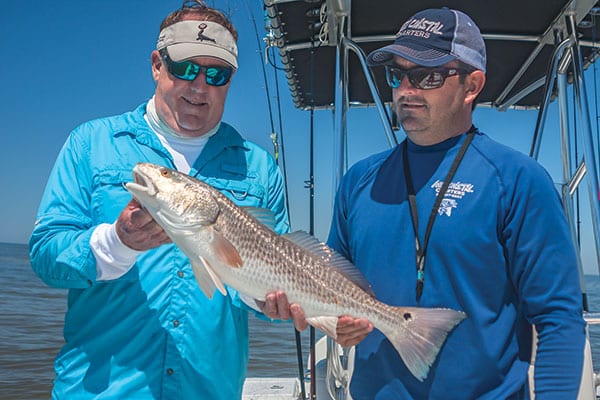
Seatrout Fishing the Barrier Islands
As well as the reefs, four nearshore barrier islands are also big fish magnets. Carter and I met Capt. Travis Paige at the Baytown Marina for the short run to East and West Ship islands. Petit Bois and Horn islands lie east of Biloxi, with Cat Island to the west. All offer excellent sight-fishing for trophy trout, redfish, black drum and flounder.
“I’ve been chasing big schools of reds and black drum for the past two months,” Paige told me as we cruised along. “I keep an eye out for cobia and tripletail too. They like to hang around the markers and debris.”
Paige, who prefers a falling tide, believes trout react to movement. He often ties on dark Matrix shad tails pinned on 3⁄8-ounce David’s Island jig heads. A black body with chartreuse tail — called “Spartacus” — is a favorite. But when mullet flip on the surface, he selects a noisy Heddon Super Spook or Paul Brown plugs in light colors like bone, chrome and white on a loop knot to maximize the action.
“It’s hard to fish muddy water after you’ve sight-fished here,” he said, reeling in a 20-inch trout on a bone-and-chartreuse Paul Brown Fat Boy plug. “Early and late are my favorite times, and I love to wade-fish. When you see schools of mullet milling in a ball on the surface, the trout are right behind.”
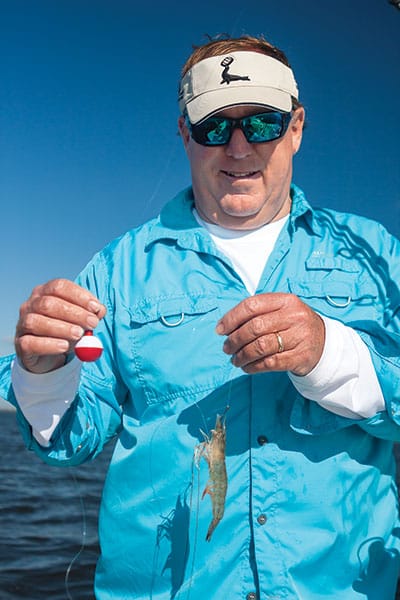
Fishing West Ship Island
Though trout were scarce, we encountered pods of redfish and sharks cruising the shallows. Schools of jack crevalle to 40 pounds and flounder also call the barrier islands their summer home. West Ship Island is 12 to 14 miles from Biloxi or Ocean Springs, making it an easy run for bay boats and center consoles alike. Afternoon wind chop and thunderstorms demand a close eye on the weather.
“In July and August, after a squall has blown through, the water slicks off, and the reds start tailing. Look around. It’s beautiful out here,” he says proudly. “There are plenty of fish — big fish. It really is special.” It is indeed.
Hurricanes and tropical storms are a fact of life along the Mississippi Gulf coast. Yet, from the rubble and changing shorelines, good things happen as the cycle of life — and Biloxi’s light-tackle bounty — continues to thrive.









